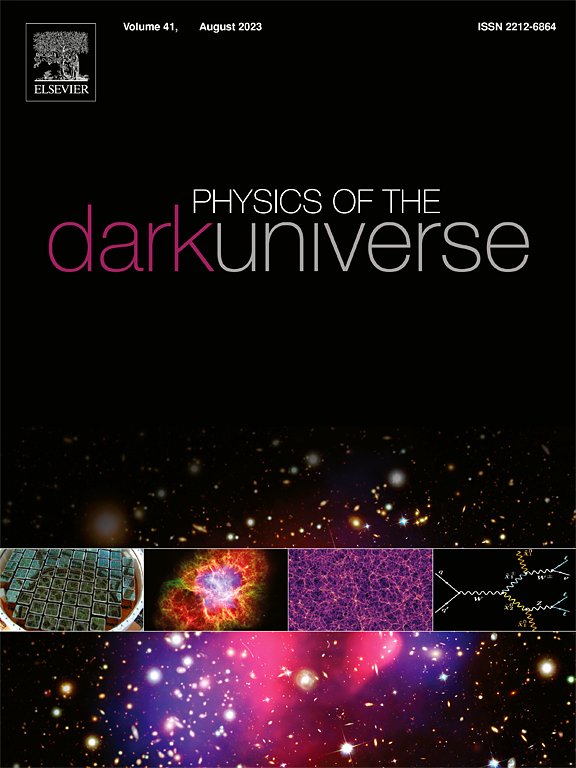What is the amount of baryonic dark matter in galaxies?
IF 5
2区 物理与天体物理
Q1 ASTRONOMY & ASTROPHYSICS
引用次数: 0
Abstract
In this paper, we re-evaluate the estimates of dust mass in galaxies and demonstrate that current dust models are incomplete and based on a priori assumptions. These models suffer from a circularity problem and account for only a small portion of dust, specifically submicron-sized grains. They overlook larger dust particles and other macroscopic bodies, despite observational evidence supporting their existence. This evidence includes the observed (sub)millimetre excess in dust emission spectra and the power-law size distribution with a differential size index , which has been measured for large particles and compact bodies across diverse environments. Examples of these large particles include large dust grains and meteoroids detected by satellites, near-Earth objects colliding with Earth, fragments in the Main Asteroid Belt and the Kuiper Belt, interstellar ’Oumuamua-like objects, and exoplanets. As a result, dust-type baryonic dark matter may be more abundant throughout the galaxy by one order of magnitude or even more than previously assumed, with a significant portion of its mass concentrated in large compact bodies. Additionally, black holes may contribute significantly to the total mass of baryonic dark matter. Consequently, current galaxy models do not provide reliable estimates of baryonic mass in galaxies. Clearly, a substantially larger amount of baryonic dark matter in galaxies would have major implications for theories of galaxy dynamics and evolution.
星系中重子暗物质的数量是多少?
在本文中,我们重新评估了对星系中尘埃质量的估计,并证明目前的尘埃模型是不完整的,是基于先验假设的。这些模型存在循环性问题,只考虑了一小部分尘埃,特别是亚微米大小的颗粒。它们忽略了更大的尘埃粒子和其他宏观物体,尽管有观测证据支持它们的存在。这些证据包括在尘埃发射光谱中观测到的(亚)毫米级过量和幂律粒度分布(差分粒度指数γ≈3.5-4.0)。这些大颗粒的例子包括卫星探测到的大尘粒和流星体、与地球碰撞的近地天体、主小行星带和柯伊伯带的碎片、星际 "Oumuamua "类天体以及系外行星。因此,整个银河系中的尘埃型重子暗物质可能比之前假设的要丰富一个数量级,甚至更多,其质量的很大一部分集中在大型紧凑天体中。此外,黑洞可能对重子暗物质的总质量有很大贡献。因此,目前的星系模型无法提供星系中重子质量的可靠估计值。显然,如果星系中的重子暗物质数量大大增加,将会对星系动力学和演化理论产生重大影响。
本文章由计算机程序翻译,如有差异,请以英文原文为准。
求助全文
约1分钟内获得全文
求助全文
来源期刊

Physics of the Dark Universe
ASTRONOMY & ASTROPHYSICS-
CiteScore
9.60
自引率
7.30%
发文量
118
审稿时长
61 days
期刊介绍:
Physics of the Dark Universe is an innovative online-only journal that offers rapid publication of peer-reviewed, original research articles considered of high scientific impact.
The journal is focused on the understanding of Dark Matter, Dark Energy, Early Universe, gravitational waves and neutrinos, covering all theoretical, experimental and phenomenological aspects.
 求助内容:
求助内容: 应助结果提醒方式:
应助结果提醒方式:


